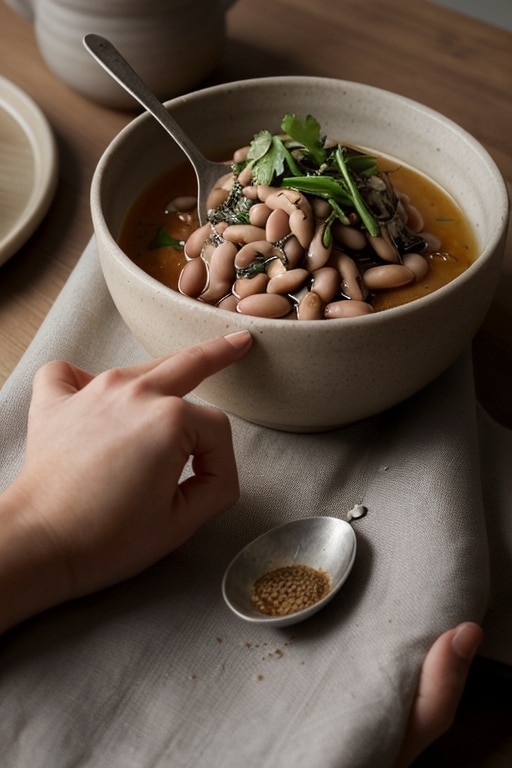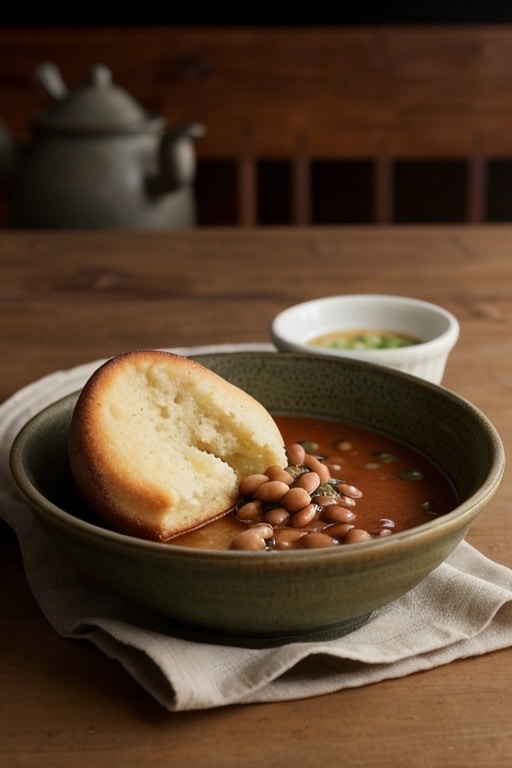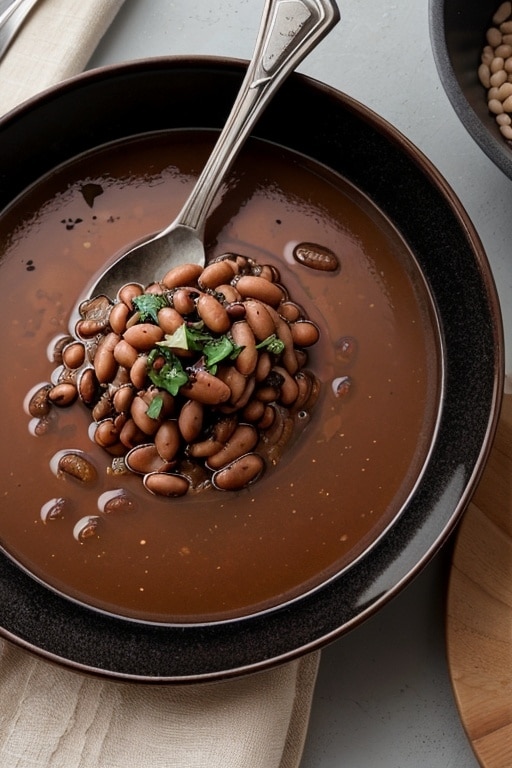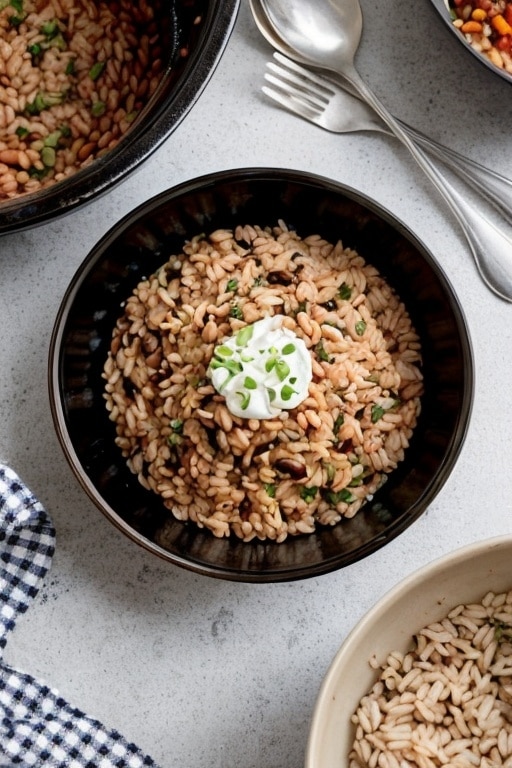Have you ever sat down to a steaming bowl of black-eyed peas and felt a wave of comfort wash over you? There’s something special about this dish that transcends mere sustenance. Black-eyed peas have been a staple in Southern cooking for generations, symbolizing luck and prosperity, especially when served on New Year’s Day.
This recipe is not just any black-eyed peas—it’s a celebration of flavor, texture, and tradition. Packed with nutrients, they are versatile enough to be served as a main dish or a side. Let’s explore why this dish is so beloved and how to prepare it perfectly.
Why This Recipe Stands Out
Black-eyed peas are not only delicious but also incredibly nutritious. They are rich in protein, fiber, and essential vitamins. This recipe elevates the humble pea with a blend of spices, vegetables, and a touch of smokiness.
Culturally, black-eyed peas hold significance in various traditions. In the South, they’re often eaten for good luck in the coming year. This recipe captures that spirit while making it accessible for any occasion.

Ingredients & Substitutions
Core Ingredients
- Black-Eyed Peas (1 cup): Dried peas are ideal for this recipe. They need soaking for optimal texture.
- Onion (1 medium, diced): Adds sweetness and depth to the dish.
- Garlic (3 cloves, minced): For aromatic flavor.
- Bell Pepper (1 medium, diced): Adds a pop of color and sweetness.
- Celery (2 stalks, diced): Provides crunch and flavor.
- Carrot (1 medium, diced): For sweetness and color.
- Vegetable or Chicken Broth (4 cups): Enhances the overall flavor.
- Bay Leaves (2): Adds a subtle depth of flavor.
- Smoked Paprika (1 teaspoon): For that smoky essence.
- Salt and Pepper: To taste.
Substitutions
- Black-Eyed Peas: Canned black-eyed peas can be used, but you’ll want to reduce the cooking time.
- Broth: Use vegetable broth for a vegetarian option. Chicken broth adds a richer flavor.
- Vegetables: Feel free to swap in any veggies you have on hand—zucchini or potatoes work well, too.
Ingredient Insights
Using fresh ingredients is key. Fresh garlic and onion provide more flavor than their dried counterparts. The quality of your broth can elevate the dish; homemade is always best, but low-sodium store-bought works if you’re short on time.
Step-by-Step Instructions
1. Soak the Peas
Begin by soaking the dried black-eyed peas overnight in plenty of water. This step is crucial for achieving the right texture and reducing cooking time.
Expert Tip: If you forget to soak them overnight, a quick soak can be done by boiling them for 5 minutes and then letting them sit for an hour.

2. Prepare the Aromatics
In a large pot or Dutch oven, heat a tablespoon of oil over medium heat. Add the diced onion, garlic, bell pepper, celery, and carrot. Sauté for about 5-7 minutes, or until the vegetables are soft and fragrant.
Common Mistake: Don’t rush this step. Sautéing the vegetables enhances their sweetness and builds a flavor base.
3. Add the Peas and Broth
Drain and rinse the soaked black-eyed peas. Add them to the pot along with the broth, bay leaves, and smoked paprika. Stir everything together.
4. Simmer the Dish
Bring the mixture to a boil, then reduce the heat to low. Cover and let it simmer for about 30-35 minutes, or until the peas are tender.
Expert Tip: Stir occasionally to prevent sticking, and check for doneness. You want them soft but not mushy.
5. Season and Serve
Once the peas are tender, season with salt and pepper to taste. Remove the bay leaves before serving.
Presentation Tip: Serve in bowls with a sprinkle of fresh herbs, like parsley or green onions, for a pop of color.
Cooking Techniques & Science
Why Soak Black-Eyed Peas?
Soaking the peas helps them absorb water, which reduces cooking time and ensures even cooking. This step also helps to remove some of the indigestible sugars that can cause discomfort.
The Role of Sautéing
Sautéing the aromatics first builds a flavor foundation. The Maillard reaction that occurs when cooking onions and garlic creates deeper flavors that make the dish more complex and satisfying.
Tools You’ll Need
A large pot or Dutch oven is essential for even cooking. A wooden spoon is perfect for stirring, as it won’t scratch your cookware. A sharp knife and cutting board are necessary for chopping the vegetables.
Serving & Pairing Suggestions
Presentation
Serve the black-eyed peas in deep bowls, garnished with a sprinkle of fresh herbs. A drizzle of hot sauce can add a spicy kick for those who enjoy a bit of heat.
Complementary Dishes
Pair with cornbread for that classic Southern touch. A simple green salad or collard greens also complements the dish beautifully. For drinks, a sweet iced tea or a light beer would work well.
Conclusion
This Black Eyed Peas Recipe is not just a dish; it’s a tradition filled with flavor and nourishment. Black-eyed peas are versatile and loaded with health benefits, making them an excellent choice for any meal.
With a few simple ingredients and techniques, you can bring the warmth of Southern cooking to your table. Don’t forget to experiment with spices and vegetables to make this dish your own.
Final Expert Tips
Feel free to add meat—ham hocks or bacon can add an extra layer of flavor if that’s your preference. And remember, leftovers often taste even better the next day as the flavors meld together.
FAQs
1. Can I use canned black-eyed peas?
Yes! If using canned peas, reduce the cooking time to about 10-15 minutes.
2. How long do leftovers last?
Stored in an airtight container, leftovers will last about 3-5 days in the refrigerator.
3. Is this recipe gluten-free?
Yes, as long as you use gluten-free broth, this recipe is gluten-free.
4. Can I freeze this dish?
Absolutely! It freezes well for up to 3 months. Just thaw and reheat when ready to serve.
5. What if I don’t have smoked paprika?
You can use regular paprika or even a bit of liquid smoke for a similar flavor.

Catherine Frank is the creative force behind FoodieGrandie.com, a cozy corner of the internet where she shares her love for home-cooked meals. From hearty dinners to sweet desserts, her recipes bring warmth and flavor to every table. Passionate about simple, delicious food, Catherine turns everyday meals into memorable moments.



